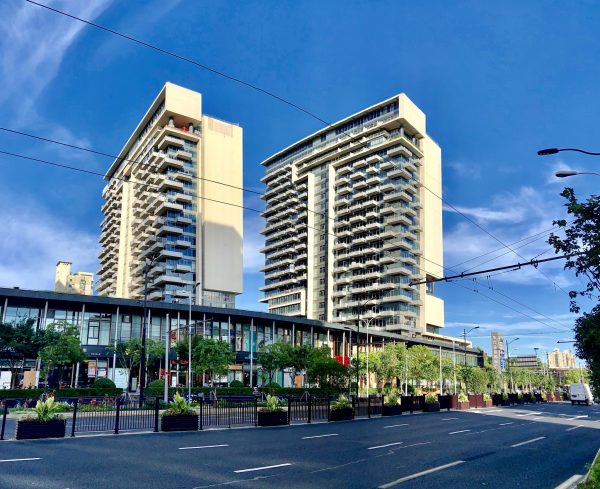But recently China’s CPCA boom has run into trouble. After more than a decade of growing conversion activity, an official drive to reverse the process has triggered large-scale public protest.
Dissent erupted in Shanghai in June 2017 in response to an order for the short-notice dismantling of residential modifications to buildings initially constructed for commercial use in two districts singled out to pilot a ‘reconversion’ process. Facing the possible loss of their homes as well as substantial financial costs, many owners of the associated CPCAs took to the streets in revolt.
Given that CPCAs have come to account for a large share of primary housing transactions in China’s megacities, these developments are likely to be viewed with alarm by CPCA owners and real estate industry stakeholders across the country.
CPCAs first emerged in the early 2000s and became popular in migrant-receiving cities, especially in response to official efforts to limit speculative housing development. For some developers, the relatively permissive planning regime for commercial buildings, together with an expectation of tolerance for residential conversion, presented an opportunity.
Naturally, the recent government crackdown has focused attention on the conversion process. In many cases these conversions were not formally authorised.
How did this situation come about? Research into the Shanghai CPCA story highlights the role of policy ambiguity on the part of governing authorities. It is well-known that China’s modern market reforms have contained an evolutionary aspect. In land-use planning, there have been many instances of rules left vague or policy change inspired by the need to legitimise formerly ‘illegal’ activities. Policy tinkering and even reversal have not been uncommon. Early ambiguity can be helpful for revision or reinterpretation later. But this also means that market players, like developers and CPCA purchasers, may anticipate that unclear rules will be likely clarified in their favour in the future.
From the local government perspective, the CPCA conversion process indeed helped solve the problem of commercial building oversupply, especially in newly-built towns. Authorities benefited from leasing land to developers, ostensibly for business development. But over time accumulating a surplus of such buildings had the potential to be seen as a failure of government planning.
The market came up with a solution to utilise unused buildings as CPCAs. For the local governments, this was seen as a cure for multiple headaches. Apart from making better use of the empty structures, it also offered a form of ‘affordable housing’, in the sense of dwellings available at a price below the standard market rate.
For consumers, CPCAs were attractive not only on cost grounds but also because they could be purchased by migrants otherwise ineligible for homeownership. CPCAs quickly gained popularity. After the initial commercial building stock ran out, new developments progressed on land designated for commercial use but with a conversion intent. While local governments did not endorse CPCAs, neither did they end developer activities, giving proponents of the scheme an impression that such activity was tolerated and could be legalised later.
Over time, municipal authorities have published a series of regulations or notices on such conversions, showing they had been fully aware of the phenomenon since 2008. But regulations were not enforced.
The ambiguous attitude of local governments towards CPCAs sent signals to market players. Many buyers bought apartments either ignorant of the risk that the dwelling could be declared illegal or in the expectation that the government might change its mind. After all, wisdom says that the law would not punish numerous offenders.
Overwhelming policy enforcement in 2017 came as a shock. It came at a time when China’s central government was wanting to strengthen its rule by law. It also reflected a municipal government push to tighten migration control where the Beijing and Shanghai governments were required to cap total migrant populations.
Perhaps fearing widespread social unrest, the Shanghai government called off the forceful implementation of reconversion after the 2017 protests. Alternative solutions, such as turning CPCAs into public rental houses and turning the owners into long-term tenants, were devised to ease tension.
An unwillingness to legalise rule-breaking market activities may reflect disagreement at the national level, where it is not as easy for the government to adapt to market changes. It is for this reason that the authority’s willingness to remain ambiguous in their policy stance at the municipal level may undermine trust in the government nationally.
Jin Zhu is a PhD Candidate and Research Assistant in the City Future Research Centre, the University of New South Wales.
Bingqin Li is Associate Professor and Director of the Chinese Social Policy Program at the Social Policy Research Centre, the University of New South Wales.
Hal Pawson is Professor of Housing Research and Policy and Associate Director of the City Futures Research Centre at the University of New South Wales.

